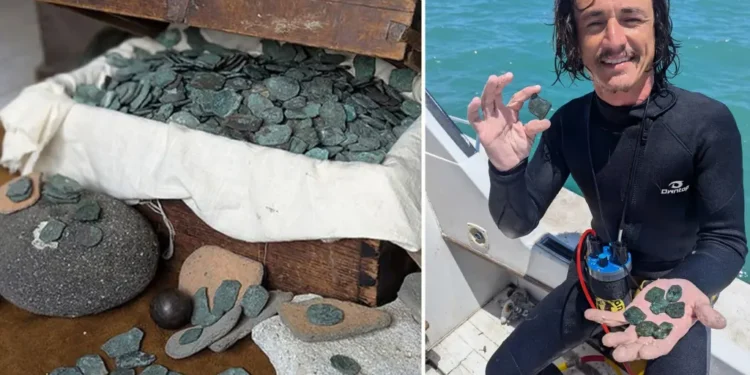A salvage team working off Florida’s Atlantic coast has recovered more than 1,000 silver and gold coins from a 1715 Spanish shipwreck, with the treasure estimated to be worth $1 million, 1715 Fleet – Queens Jewels LLC announced this week.
The coins, thought to be minted in Spanish colonies including Bolivia, Mexico, and Peru, were discovered this summer along a coastal stretch known as the “Treasure Coast” between Melbourne and Fort Pierce.
The treasure originates from a Spanish fleet carrying gold, silver, and jewels from the New World that was destroyed by a hurricane on July 31, 1715, according to the 1715 Fleet Society. The disaster scattered cargo across the seafloor, where it has remained for over three centuries.
Dates and mint marks remain visible on some recovered coins, providing valuable information for historians and collectors studying the Spanish Empire’s Golden Age.
“This discovery is not only about the treasure itself, but the stories it tells,” said Sal Guttuso, director of operations for the salvage company. “Each coin is a piece of history, a tangible link to the people who lived, worked, and sailed during the Golden Age of the Spanish Empire. Finding 1,000 of them in a single recovery is both rare and extraordinary.”
The salvage operation employs dive crews, boats, and underwater metal-detection equipment, using techniques including hand-fanning sand and suction devices to search the ocean floor.
Last year, Florida officials recovered dozens of gold coins stolen from the site by a salvager identified as a family member of a team contracted by 1715 Fleet, Queens Jewels LLC.
Florida law designates “treasure trove” and historic artifacts abandoned on state-owned lands or waters as state property, though excavators can obtain permits for recovery services. The law requires approximately 20% of recovered archaeological materials be retained by the state for research collections or public display.
Guttuso told The Associated Press his team develops detailed seasonal inventories of recovered artifacts for state review. Florida officials select up to 20% of items for public retention through a negotiation process approved by federal court. Remaining artifacts are split equally between the salvage company’s owners and subcontractors.
“We want to do it right,” Guttuso said. “And it benefits the people of Florida. They end up in the museums.”
The site has yielded millions of dollars in gold coins over the years, making it one of the most productive shipwreck salvage operations in U.S. waters.







